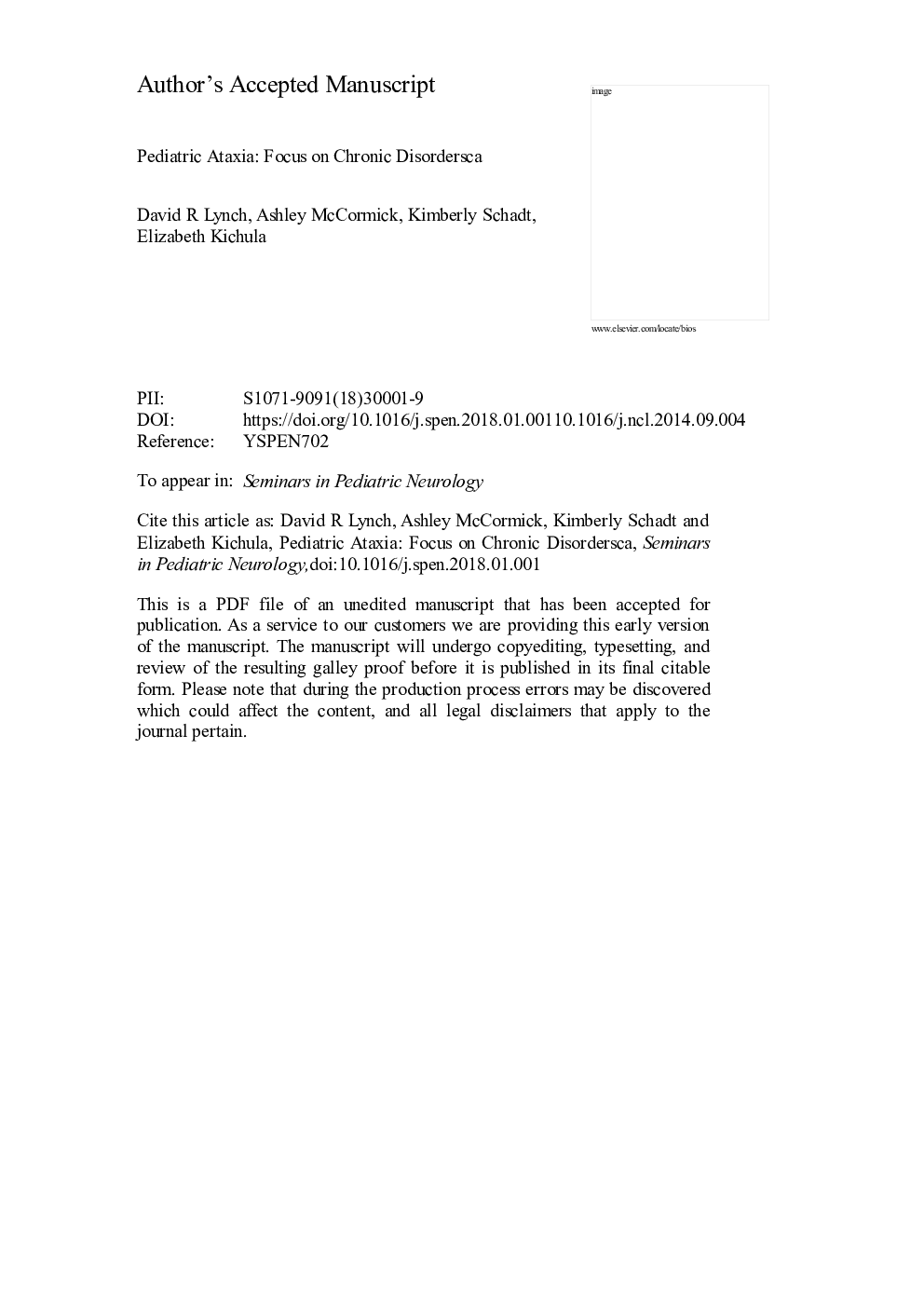| Article ID | Journal | Published Year | Pages | File Type |
|---|---|---|---|---|
| 8690965 | Seminars in Pediatric Neurology | 2018 | 37 Pages |
Abstract
Evaluation of a pediatric patient presenting with ataxia can be expensive and time consuming. Acute causes tend to have a clear developmental paradigm, but chronic presentations are more likely to be secondary to a genetic disorder, either one that primarily causes ataxia or that presents ataxia as one of a multitude of symptoms. Evaluation should focus on a quick diagnosis for those that have treatment options and for those that require other systemic monitoring. Friedreich ataxia is the most common, and genetic testing can easily confirm the suspicion. Testing for vitamin E (for ataxia with isolated vitamin E deficiency) and alpha fetoprotein (for Ataxia Telangiectasia or AT) are important, as is empiric treatment with coenzyme Q10 for those genetic abnormalities that can lead to coenzyme Q deficiency. Clear family history, disease progression, physical examination focusing on type of ataxia and other associated neurologic features, and investigation of systemic involvement can help in focusing clinical assessment.
Related Topics
Life Sciences
Neuroscience
Developmental Neuroscience
Authors
David R. MD, PhD, Ashley BA, Kimberly MSN, Elizabeth MD, PhD,
